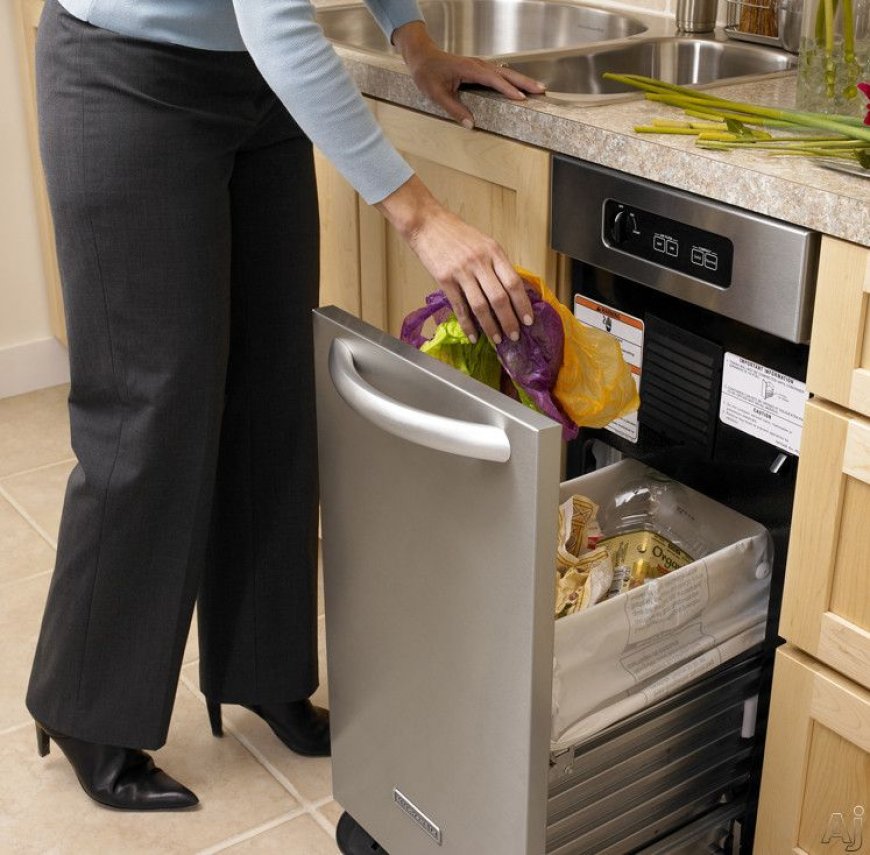Trash Compactors - Functions and Benefits

Trash Compactor : A trash compactor is a device used to compress and reduce the size of waste materials, typically household trash or recyclables. It is a self - contained device that compresses the garbage inside its bin. The basic elements of a trash compactor are - a trash drawer with a safety latch and removable bin, a ram or plate which compresses the refuse and a motor.
Functions of a Trash Compactor :
Trash compactors work by applying pressure to waste materials, reducing their volume and making them more compact. Here's a general overview of how a typical trash compactor operates:
-
Loading: To begin, you open the compactor's door or drawer. Inside, you'll find a chamber or container where you place your trash. Some compactors have a manual loading system, while others may include a sensor that detects when the compactor is full and activates the compression process automatically.
-
Placing a compactor bag: Before loading any trash, you need to insert a specially designed compactor bag into the container. These bags are made of durable materials capable of withstanding the pressure applied during compression. The bag typically has a reinforced construction and may have a twist tie or other closure mechanism to secure it once it's full.
-
Loading trash: You start placing your waste materials into the compactor, ensuring they are spread evenly and not concentrated in one area. It's important to avoid putting large or hard objects that could damage the compactor or impede the compression process.
-
Closing the compactor: Once you've loaded the trash, you close the compactor's door or drawer securely. This ensures that the waste is contained within the compactor during the compression process.
-
Compression: When you activate the compactor, a motorized ram or plate inside the unit moves forward, applying force to the trash. The ram exerts pressure on the waste, gradually compacting it. The level of compression varies depending on the compactor and its settings.
-
Release of compacted waste: After the compactor has compressed the trash to its predetermined level, the motorized ram retracts, allowing you to open the compactor again. The compacted waste remains in the compactor, usually contained within the compactor bag.
-
Disposal: Once the compactor bag is full, you remove it from the compactor. Depending on the model, you may need to tie or seal the bag before disposing of it in the appropriate waste container or following your local waste disposal guidelines.
Benefits of Trash Compactor :
- Space-saving: Compacting trash reduces its volume, which means you can use fewer trash bags and save space in your garbage bins or dumpsters.
- Convenience: With a compactor, you won't need to take out the trash as frequently since it can hold more waste.
- Odor control: Compactors can help contain unpleasant odors by reducing the exposure of trash to the air.
Considerations:
- Compatibility: Trash compactors generally require the use of specially designed compactor bags. These bags are thicker and more durable than regular trash bags and can withstand the pressure of compacting.
- Recycling: Some compactors have separate compartments for recyclable materials, allowing you to compress both trash and recyclables in the same unit.
- Maintenance: It's important to clean and maintain your compactor regularly to prevent odors and ensure its proper functioning. Follow the manufacturer's instructions for maintenance guidelines.
Environmental impact: While trash compactors can be useful for waste management, it's essential to consider recycling and reducing waste at the source. Recycling as much as possible and minimizing single-use products can have a significant positive impact on the environment.
What's Your Reaction?
























































